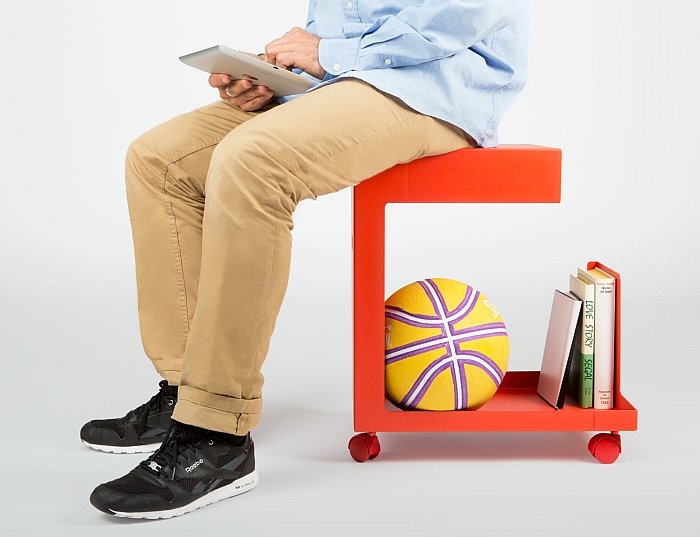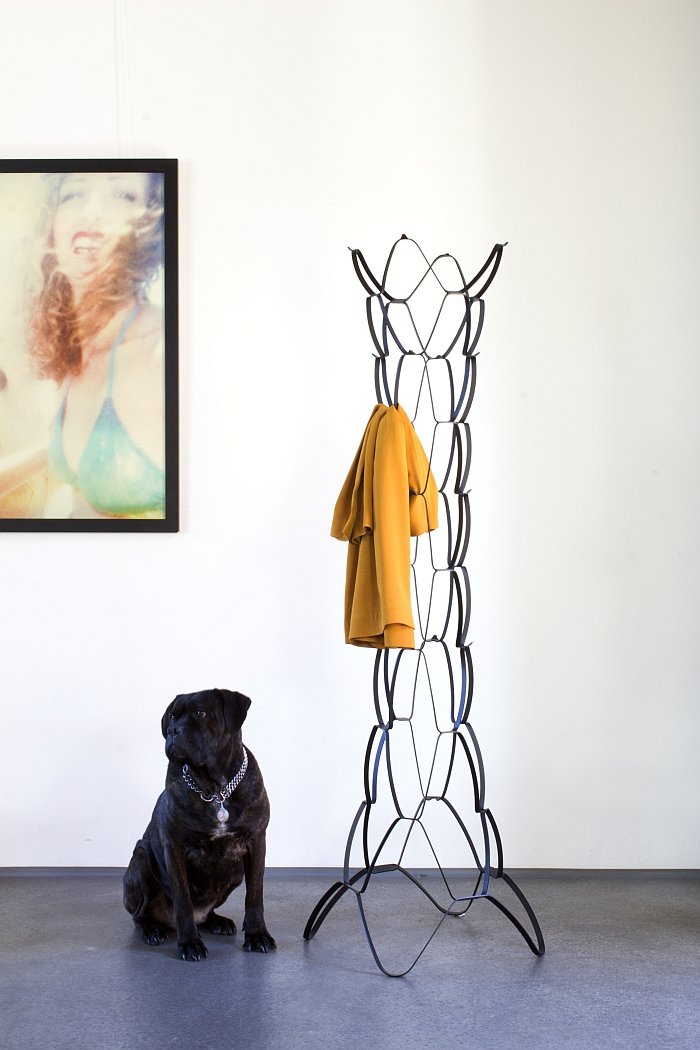On Thursday June 11th the 2015 DMY International Design Festival opens its doors to the public, and Berlin will once again be the focus of the global design community.
But is Berlin the creative city many assume it to be? Beats the creative heart genuinely with a different rhythm, and with more fervour, on the banks of the Spree than elsewhere? Or is "Berlin Design" just a nice bit of location marketing behind which stands little more than non-stop parties and endless cheap lifestyle accessories no one actually needs nor wants?
Not least on account of recent enforced changes the DMY festival has undergone, DMY Berlin 2015 seemed an opportune moment to reflect with some of the Berlin design community's protagonists on the current condition of contemporary design in Berlin.

In many respects the story of Berlin as a design metropolis begins in 2003 with Designmai, or perhaps more accurately put, the story of post-unification Berlin as a design metropolis begins with Designmai. Pre World War II Berlin was not only one of Germany's most important centres for architecture and design, but one of Europe's. Through his work with and for AEG in Berlin Peter Behrens helped introduce and propagate the ideas of both corporate identity and improved quality through design led product development; Walter Gropius may have established Bauhaus in Weimar, but its origins are firmly rooted in the Berlin creative scene of the late 19th/early 20th century; while the Barcelona Chair, unquestionably one of modernisms most iconic works, famously found its seat form in the sand of Berlin's Wannsee beach. Post-war, German design moved, largely, westwards: Frankfurt, Munich, Stuttgart, Hamburg, Düsseldorf becoming the new centres.... and Berlin Kreuzberg, the West Berlin enclave becoming popular amongst those looking to avoid national service - West Germans living in West Berlin being excused from such. Isolated from the rest of West Germany and living under the shadow of the Berlin Wall a more or less autonomous community became established in Kreuzberg, a community which spawned its own unique creative scene of artists, musicians and designers, designers who became an important component of the Neues deutsches Design movement. And while with the Kunsthochschule Berlin-Weißensee East Berlin did have one of the DDR's most important design schools, the main centres of industrial production, and thus of industrial design, were largely outwith the East German capital.
As in 1989 the two Germanys came together as one, the spirit of the age, the desire for change and the necessity of finding alternative solutions to new and existing problems inspired a new generation of young Berlin designers, and attracted ever more creatives to the future German capital. The fusion of West Berlin improvisation, East Berlin realism and the new ideas being brought from outwith, fuelled, invariably, by the relatively cheap cost of living and the infamous party scene of the 1990s, creating the foundations for contemporary Berlin's creativity and facilitating the establishment of Designmai in 2003.
Organised by the Transform e.V collective, a group whose members included, amongst others, Hermann August Weizenegger, Werner Aisslinger and Mateo Kries, then head of the Vitra Design Museum's short lived Berlin outpost, today Chief Curator of the Vitra Design Museum, Designmai ran for just five years, yet talk to anyone, but anyone, who experienced it and you will hear how, thanks largely to its essentially conceptual approach, it changed perceptions about what design is, can and should be, changed the way design was perceived and for all changed the way designers understood their profession. In 2004 the inaugural Designmai Youngsters was staged as a platform within Designmai for young Berlin design talents, from Designmai Youngsters arose, following the demise of Designmai, the DMY festival, a platform which is today perhaps the most conspicuous and accessible expression of Berlin as a city of design.
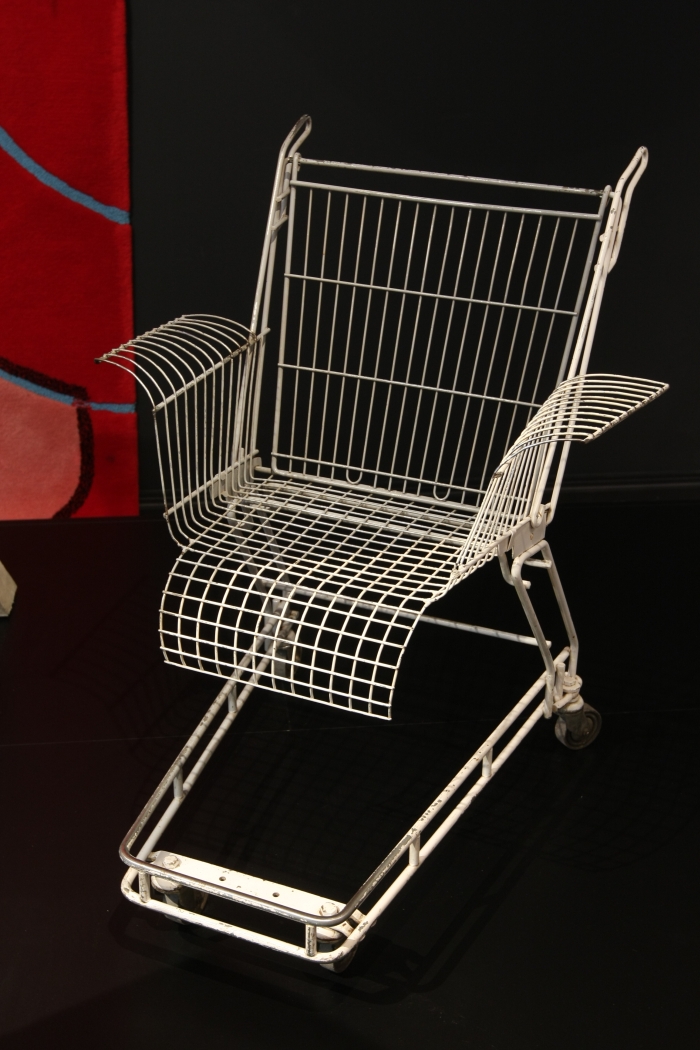
Partly because of the nature of its origins and partly because of the history of the city, Berlin's post-unification design community has long had a reputation for improvisation, of producing low tech, low cost design, or as Tim Brauns from design agency e27 remembers the years following unification, "the products that were being produced were often very innovative in terms of their idea, but in terms of realisation it was all circular saws and MDF, people were simply making whatever the available tools allowed them to make." Founded in 1995 by Tim Brauns, Hendrik Gackstatter and Fax Quintus e27 are one of the longest serving design agencies in Berlin. Originally formed as a product design studio economic reality forced an early adoption of graphic design and today e27 work as a graphic, web and corporate identity agency, in addition to creating products, be that lighting and furniture for the likes of Pulpo, B.lux and Magazine or industrial products for and with firms such as e.on or Ebee Smart Technologies, and as such have not only grown with the Berlin design community over the past twenty years, but have been well placed to observe the developments first hand. Thus, while the circular saw and MDF approach may have dominated the immediate post unification years, and in many ways represented the Berlin design scene of the period, as Tim Brauns recalls, there were other, more progressive forces, at work, "with the Endless Shelf for Porro Werner Aisslinger was, effectively, the first Berlin designer who realised a commercial product with die-cast aluminium components, and that was fantastic, almost revolutionary". The Endless Shelf was launched in 1997 and since then Tim Brauns has observed a gradual evolution of and in the Berlin design community, "those designers who remained focussed on what they were doing have definitely developed, have become more professional and are now producing work to a very high international standard", he says, "and behind them there are an awful lot of good younger designers who in all probability will become more professional quicker than we did simply because the conditions today are more favourable."
This sense of an increasing professionalism of the Berlin design community and increasing possibilities for designers in the city is a view shared by Oliver Deichmann from osko+deichmann design studio, "this idea of Berlin designers using what they find in the street or simply nailing a couple of planks of wood together is an outdated image", he says, "Berlin today is home to a lot of very talented designers who are using modern methods to realise works of a very high quality." Following seven years as the more conceptual based studio wunschforscher - and having famously given the world the Sushi Roller, a mechanised, half-automatic, sushi making machine - in 2005 the UdK Berlin graduates Oliver Deichmann and Blasius Osko established osko+deichmann design studio as a concerted move towards professional product design; a move which has seen the pair establish an impressive portfolio of projects with an equally impressive international roster of manufacturers including Ligne Roset, Blå Station and Brunner, and which, according to Oliver, has let them experience "all three phases of Berlin" as design in the city has become ever more professional. "In the beginning people tended to feel sorry for us, stuck here in Berlin,", he laughs, "then suddenly Berlin was "in", became underground and creative, and now all the major manufacturers want to have a flagship store here, a development which, paradoxically, to an extent also kills off the underground image they hope to capture."
The more one speaks to designers who have been active in Berlin since the 1990s, the more one realises not only that the rough and ready design approach of yore has largely been superseded by work of an increasingly professional nature, but that the "Arm aber Sexy" - Poor but Sexy - motto which has long defined Berlin's position in modern Europe is not only losing the essential truth that was deftly hidden in the affectation, but that it may slowly becoming more damaging than it was undoubtedly helpful.
"Despite all the progress that has occurred here, one has the feeling that Berlin is still considered as a location for fanciful, youthful improvisation, and not of serious designers who are realising innovative, high-quality projects for international companies", laments Mark Braun. And not one feels without a degree of justification. A graduate of the FH Potsdam, and with the experience of exchange semesters at Burg Giebichenstein Halle and Design Academy Eindhoven, Mark Braun established his own studio in Berlin in 2006. Himself one of the young hopefuls who helped the then fledgling DMY confirm itself as the platform for Berlin's creatives, Mark Braun has gone on to realise projects for international manufacturers as varied as, amongst others, NOMOS Glashütte, Thonet, Authentics or e 15.
In addition to design studios such as Mark Braun, e27 or osko+deichmann Berlin can boast the likes of the aforementioned Werner Aisslinger who cooperates successfully with manufacturers as varied as Moroso, Vitra or Flötotto; Delphin Design's co-operations with Thonet and Brune may not create the same media impact as a new Werner Aisslinger product, but are every bit as innovative and commercially important to the manufacturers; similarly Läufer+Keichel have quietly established an enviable portfolio of high quality, critically acclaimed, products with the likes of Offecct, Thonet or Zeitraum, while in the persona Hella Jongerius Berlin has an immigré with more than a hint of international allure and mystery. But it's not just the old, established studios who are driving contemporary Berlin design, younger Berlin designers are continually coming through and making themselves felt on the European market; as three examples of many, David Geckeler's Nerd Chair is in production with Muuto, Florian Schmid's Carla & Carlo table/mirrors are available through Zeitraum, while Neue Wiener Werkstätte produce Johanna Dehio's Hockerbank and Milan based Discipline her Quarter Bin. Yet for many outwith Berlin the city's design culture is still all about making do and adapting. And partying.
For Mark Braun this lack of recognition can partly be laid at the feet of the design community themselves, "Berlin designers tend to underplay their successes", he reflects, "I think we need to learn a few lessons from, for example, the Munich designers, and to celebrate our successes, and to show that yes we are innovative, creative improvisers but also mature, experienced professional designers."
To learn from others, or as Fabian Burns, Creative Director of DMY 2015 hinted in his recent conversation with us, find a stronger voice.
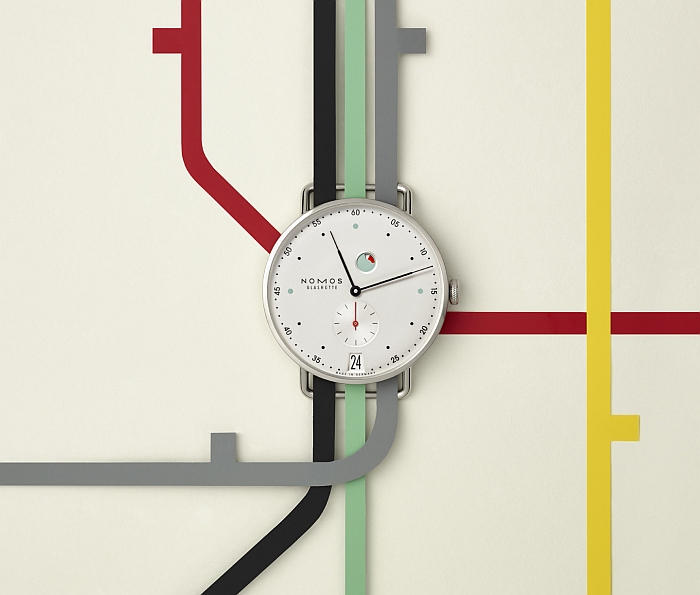
Aside from the evolution in terms of design and designers, recent years have also seen advances in terms of producers. Whereas for many years System 180 and their modular, scaffolding inspired, shelving and storage system were Berlin's only furniture maker of note, the city can today boast an increasing array and diversity of interesting and innovative, if predominately small scale, producers. Atelier Haussmann, for example, have grown from a forger of rustic metal furniture to a very sympathetic manufacturer of consistently high quality objects; similarly Schneiderschram have quietly established a strong reputation for quality and innovation, albeit predominately in wood rather than the steel preferred by Atelier Haussmann. In addition to the new producers Berlin is also home to an ever increasing number of designer/producers - not a Berlin trend per se, but something that fits in very well with the (his)tory of Berlin design and seems to make more sense in Berlin than in most other metropoli. Studios such as, for example, llot llov, Bartmann Berlin, 45 Kilo or Alex Valder, to name but four, have successfully established their own signature collections far removed from the felt bags and upcycled kitchen accessories many outwith the city associate with Berlin designer/producers and thus have helped advance the idea of Berlin as a location for eclectic, professional design.
Then there are those, such as, for example L&Z, who started out as self-producers but who are now growing into self-confident design publishers. Established in 2010 by Daniel Lorch and Aidin Zimmermann largely as a vehicle through which to produce and distribute Daniel Lorch's Sinus trestle, L&Z quickly expanded their range, firstly with self-designed pieces such as the Mobile Pedestal Ed before beginning co-operations with external designers: the first being the Roll-Up Bin by Basel based Michel Charlot, the second a lamp, currently being developed in cooperation with a Berlin based design studio and which all going well will be released later this year. Although the decision to establish their company in Berlin was largely based on the mundane fact that both Daniel and Aidin were already living in the city, the decision did come with in-built advantages, quite aside from the affordable office, atelier and warehouse space came the fact that, according to Daniel, the majority of the initial trestle customers were based in Berlin, for all in the many design and architecture bureaus to be found across the city. A fact which would tend to put paid to the legend that there is no real purchasing power for contemporary design in Berlin, especially given the support offered by the experiences of the label New Tendency. Tracing its origins back to a Bauhaus University Weimar student project New Tendency was established as an interdisciplinary design company in Berlin in 2012 and initially concentrated on the production and distribution of their own designs such as the Meta table and Shift storage system before expanding their portfolio with works by external designers including Clemens Tissi, Markus Miessen and Sigurd Larsen. "At the beginning it was a little bit slow here in Berlin, initially business was much better in Switzerland and Southern Germany", explains New Tendency's creative director Manuel Goller, "that however is changing and Berlin is becoming an ever more important market for us. Not only because of the number of people moving to the city but also thanks to, for example, the start-up scene and the new companies that are being established here, in addition on account of increasing tourism the Berlin hotel market is currently very exciting."
Whereas both New Tendency and L&Z appear to have successfully disproved the belief in Berlin's failing purchasing power, they both confirm another long accepted norm of Berlin design: the city's lack of manufacturing capacity. "Berlin isn't particularly strong in terms of industrial production, and so our products are not manufactured here in Berlin, rather in regions such as Bavaria where there is more industry and the production is more efficient", explains Daniel Lorch, before adding, "but to be honest the location of the manufacturer is not so important for us, important is the quality of the work and that promised delivery times are met." Similarly while all New Tendency products are produced exlusively in Germany, they are not produced in Berlin. Berlin production being the sole reserve of smaller scale designer/producers, and System 180, in effect a large scale designer/producer having as they do, essentially, one system which can be freely configured to produce storage units, tables, display boards, et al. But could one, theoretically, as a furniture brand produce in Berlin? Manual Goller considers for a few seconds, "We do work with a couple of Berlin companies in context of model construction or prototypes, and in terms of such Berlin is an excellent location with some very good workshops, but if one could organise larger scale, serial production in Berlin? I'm not convinced. It would however be great if Berlin could offer more manufacturing, that would be fantastic. However for us Berlin is more important as a creative base than a manufacturing base."
And is a creative base in which the young company clearly feels at home. In addition to a network of over 25 partner shops throughout Germany, New Tendency have established a sales network of contemporary furniture stores in Greece, Latvia, Denmark, Switzerland, South Korea, Japan, Monaco and Canada. All going to plan New York should be added by the end of the year with further locations in planning. Similarly L&Z products can be found in cities such as Vienna, Venice, London, Copenhagen, Helsinki, Hamburg, Cologne or Seoul; Atelier Haussmann can boast of partners in Europe, New York or Moscow; while System 180's dealer network stretches from San Francisco over Europe and on to Tokyo. And while being represented in shops is obviously no guarantee in itself that products will actually be sold, it does increase the chances. Not least the chance that architects will select your products for an upcoming project. And in the furniture industry architects are, generally speaking, more important than private customers.
Thus while firms such as L&Z or New Tendency don't produce in Berlin they are increasingly benefiting the Berlin economy through both the tax they are paying on global sales and the money they invest in the city's trade workshops during the product development stages, printing workshops during the marketing stages and bars and restaurants during the hospitality stages, while their national and international presence invariably helps promote a more realistic image of contemporary Berlin creativity. At least a little. In addition, although neither have a particular focus on Berlin designers - both, sensibly, preferring to choose co-operations which compliment the collection and underlying design philosophies rather than on geographic merits - both L&Z and New Tendency cooperate with Berlin designers and are more than open to future co-operations, there being obvious advantages in developing a project with someone who lives in the same city as you.
Logically, therefore, the more successful companies such as New Tendency or L&Z are, the more they can contribute and the more co-operations they can offer designers. And the more successful, and more numerous, Berlin based labels become, the greater the chances that someone will decide that rather then developing a new app it might be just as profitable to establish a manufacturing company and thus not only allow for serial production in Berlin, but also increased opportunities for the city's designer/producers to further expand their collections and reputations.
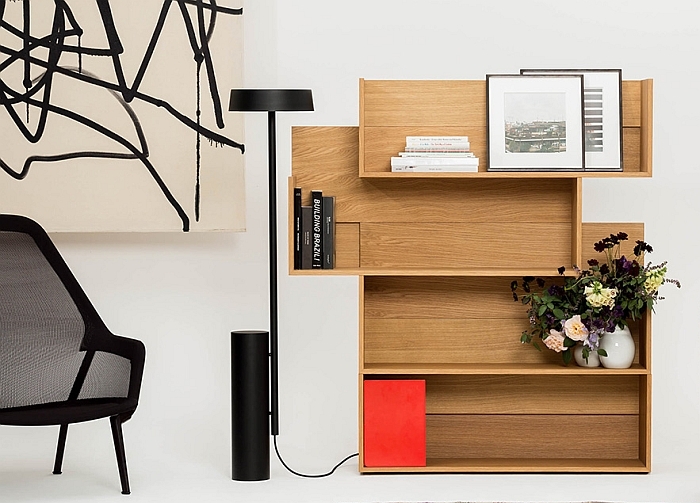
Despite the evolution the Berlin design industry and community has unquestionably undergone over the years, many "problems" remain: most Berlin design studios are one man operations generating sufficient income to remain viable, but little more, and certainly lacking the resources to absorb the many excellent graduates the city's design schools produce; politicians of all persuasions are quick to use Berlin's designers to accentuate the city's creativity, yet there is only limited official support for the design industry; Berlin is home to only very few contemporary design galleries meaning Berlin designers have relatively few opportunities to present new works locally; Berlin continues to be ignored by the rest of Germany - there is in effect "German Design" and "Berlin Design"; the "brand" Berlin is still widely understood as it was in 1995, and not as it is in 2015.
Berlin wouldn't be Berlin however if it didn't know how to transform "problems" into "advantages"; consequently, and largely because of the city's innate attitude, Berlin is arguably currently one of the more promising locations to be based as a designer.
One of Berlin's greatest strengths, greatest assets, is the networks that exist throughout the design community. We know that over the years there have, invariably, as in any extended family, been conflicts and problems; but, when all is said and done, Berlin is, despite all its pretensions, little more than a village. Everyone knows everyone and the networks that have become established over the past twenty or so years are one of the most important sources of nourishment for the Berlin design community bringing as they do commercial benefits as one designer introduces a colleague to a producer, architect or industrial concern. And while such networks aren't exclusive to Berlin, they do play a particular role in Berlin as they allow the city's designers to by-pass the lack of state support, national recognition and the city's commercial and industrial shortcomings.
Then there are the city's handicraft businesses and workshops, a support chain for the design community and one which all Berlin creatives with whom we have ever spoken refer to in the highest terms. That Berlin has carpentry workshops, metal workshops, model makers and the like obviously isn't unique to the city, what is specifically Berlin however is the sense of fearless adventure that tends to haunt such concerns. Partly because their recent history is similar to that of the design industry, partly because of their experiences with Berlin's long established conceptual art community, the Berlin handicraft trades have, and at the risk of generalising to the point of misleading, developed a certain immunity to the belief that things can't be done. Everything can be achieved. Somehow. And will be paid for. Somehow. But first the work. In a previous smow interview Nils Holger Moormann compared product development with mountaineering, and for all the excitement of going on an unconventional tour with unconventional methods. In their local workshops Berlin designers have in many respects the ideal companions for such a trip. Which in retrospect may also explain the relatively high number of Berlin designers in the Moormann portfolio.
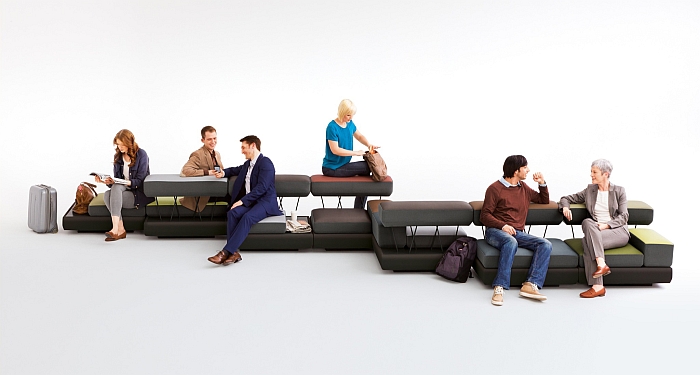
A final, and possibly decisive, factor as to why Berlin is so attractive a location for designers is, and as every designer you speak to you will tell you, the inherent power of Berlin to inspire. A sentiment you never hear in Cologne, Frankfurt, London, Paris, Copenhagen, even Milan. Berlin however with its history, mix of cultures and traditions, political confusion, strong artistic heritage, invariably the nightlife, restaurants and cafes, its diversity of museums, theatres, art galleries, concert venues and for all the density and variety of international creatives based in the city, be that designers, architects, artists, authors, musicians, photographers, translators or fashion stylers: Berlin is a city emboldened by a sense of independence that is readily reflected in a unique creative energy. Hyperbolic? Almost certainly. But as a visiting Eindhoven based designer recently enthused, in Eindhoven you only meet designers, in Berlin you constantly meet creatives from across genres, a situation which allows for new impulses and new insights. In addition, thanks to its relative affordability Berlin is home to a lot more conceptual design and architecture studios than you are likely to find in most other German cities and, and again because it is but a glorified village, this freer spirit invariably seeps through to the rest of the design community and stops the scene becoming too conservative, too financially orientated and helps remind all of the fundamental nature of the design profession and the design process. And that it is meant to be something to be enjoyed. Or as Oliver Deichmann puts it "there is a wonderful attitude in Berlin which constantly reminds you that, in the big scheme of things, as a designer your problems really aren't that important. And that makes working here a real joy."
Yet paradoxically the biggest challenge facing Berlin design is exactly its freedom and independence. Speak to any designer or architect in Berlin who has lived and worked in other cities and they will tell you that everything in Berlin is much slower, not less productive or less focussed, just less hurried, and that largely because the lower cost of living means there isn't the immediate need to generate income that there is in London, Paris, Munich or Copenhagen. That is changing, Berlin is becoming more expensive, suitable space is becoming less readily available, Mark Braun speaks of the future being about a "Kampf um Freiräume" - a struggle for space - conceptual as well as physical, albeit a struggle that won't be undertaken, as once, by building barricades and declaring autonomous republics, but by evolving so that one earns the money necessary to meet the new conditions. The contemporary design scene in Berlin has understood, the challenge for the Berlin design community is now to master that future without simply becoming another part of the professional German design industry, without compromising its integrity and rejecting the history that has brought it where it is today.
And that is what we, at least partly, understand in the criticism one often hears around Berlin that the DMY festival has become an outmoded platform. It hasn't. However it is not only the best known face of Berlin design but, and for all in context of its origins as part of Designmai, is an institution that has accompanied the Berlin design community as it has grown and which due to its close association with the Berlin design scene has always helped Berlin underscore its status as an island on Germany's eastern shore. There is a strong emotional link between the Berlin design community and DMY, in effect it belongs to the community, and we feel that many Berlin designers, both established and establishing, want DMY to help them master the coming challenges. Question however if it can. The insolvency of the original festival organiser DMY Berlin GmbH & Co. KG was therefore for many a moment to reflect as to how DMY could best continue to accompany them. The ideas are manifold, often contrasting, we are after all talking about Berlin, and so perhaps the most important aspect of DMY 2015 will not be the exhibitions per se, but the debate that will inevitably occur as to how DMY proceeds and if it can/should continue to take the Berlin design community with it. An important aspect of that discussion, we suspect, will be the success or otherwise of the professional day and the mix of professionals who visit the festival. The designers need to know that potential clients are there, the manufacturers need to know that potential customers are there. By Sunday evening we'll all be a little wiser.
And dancing in Berghain. Obviously.
